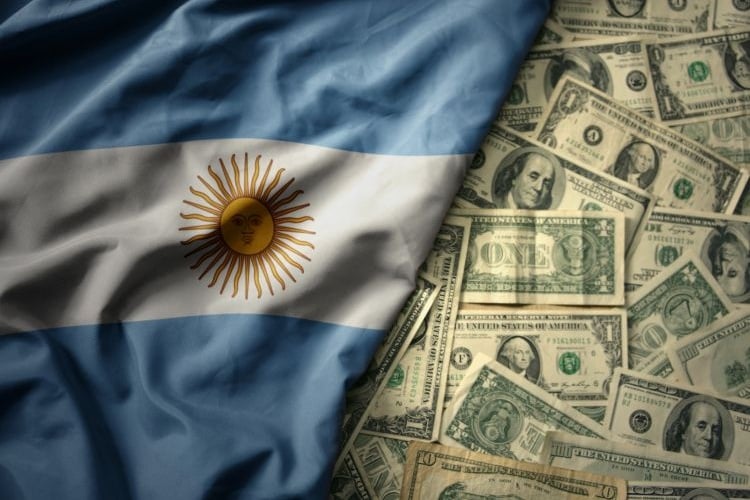Earlier this week, the United States signed an agreement with Argentina for a $20 billion swap line, to be augmented with an additional $20 billion provided by private sources. The objective is to prevent a collapse of the peso that would derail the country’s disinflation program and trigger a defeat of President Javier Milei’s party in upcoming congressional elections. This bailout is a terrible idea—it hands over $40 billion in US public and private funds to Argentine speculators with only a meagre chance of repayment for, at best, a short-lived stabilization of Argentina’s economy. But if the Trump Administration is hell-bent on handing over the cash to its political allies in Argentina, it should at least do it right—by using the funds to finance full dollarization.
In the leadup to his election in December 2023, Milei actually campaigned on the promise of dollarizing Argentina’s economy. In the event, he didn’t follow through, in part because the government was broke and lacked the dollars needed to do it. Since his election, Milei has instead implemented an orthodox disinflation program of dramatic cuts in government spending, later combined with interventions in the foreign exchange market to slow the depreciation of the peso. These policies have brought inflation (year/year) down toward 30 percent, low by Argentine standards, but at the cost of an overvalued exchange rate and widespread economic distress. In consequence, as well as because of political scandal within his party, Milei’s candidate lost the Buenos Aires provincial election in September and prospects are dicey for mid-term congressional elections next week.
Fortunately for Milei, he is pals—in fact, the “favorite president”—of President Trump. Accordingly, the Administration has come to Milei’s rescue with a $20 billion swap agreement. The dollars will be used by Argentina’s central bank to buy pesos in the foreign exchange market and thus prop up their value. Moreover, the Administration has intervened directly itself on several occasions to buy pesos. Finally, the Administration is working on an additional $20 billion to be provided by private lenders, who are now looking to ensure they don’t lose money on the deal.
So what’s wrong with all this? Plenty:
- The deal is an obvious attempt to sway another country’s democratic elections.
- The deal is based on Trump’s personal and political allegiances rather than the best interests of the United States or the global community.
- The deal undermines the influence and effectiveness of international institutions, such as the IMF.
- The deal puts $40 billion of taxpayer funds at risk, $20 billion directly through the swaps and $20 billion indirectly if the Administration bails out private lenders induced to participate in the facility. Argentina is a serial defaulter and is already at high risk of debt distress. It owes the IMF, its senior creditor, about $57 billion, more than triple that owed by any other country.
- The deal is unlikely to stabilize Argentina’s economy. Decades of successive financial crises have taught Argentines that if there is even an iota of doubt about a government stabilization program, buy as many dollars as you can while the government is offering them cheaply. The government has already run through $14-15 billion of IMF money this year. Even if the brute power of $40 billion props up the peso for now, this will only sow the seeds of complacency, a return to profligacy, and renewed financial trauma later. Lather, rinse, and repeat.
So much for the art of the deal. Clearly, the best option for the United States is to keep the taxpayers’ money safe and let Argentina float the peso.
But if the Trump Administration insists on handing over the moola, it should at least do so as effectively as possible. And that means using the money to fully dollarize Argentina’s economy: replacing the peso with the dollar for all transactions and assets. To be sure, Argentina would lose the ability to adjust its exchange rate, print money to finance budget deficits, and conduct its own monetary policy, but those losses are, as they say, features rather than bugs. As demonstrated by Ecuador, El Salvador, and Panama, inflation would fall roughly to US levels, a necessary—but hardly sufficient—condition for a stable and prosperous economy.
Can Argentina dollarize with $40 billion? Absolutely. Argentina just has to use the funds to replace the monetary base, which is currency plus the bank reserves needed to back deposits. The monetary base now amounts to only about $28 billion.
To conclude, Trump’s Argentina bailout is a bad idea. But if the administration is bound and determined to fork over the cash, using it to dollarize would be the best way to promote a lasting stabilization of Argentina’s economy.
